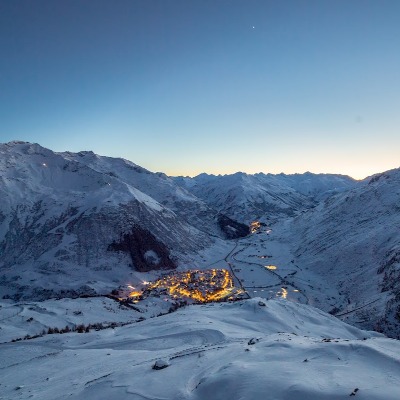Inntopia - Mountain Destinations Headed For A Winning Summer, Winter Bookings Strengthen

The busiest months of the summer season are now safely banked for western mountain destinations and the remaining two months are maintaining the summer pattern of both strength and stability. The result is going to be a winning summer for participating lodging properties after clawing back some concerning occupancy deficits reported last spring from data collected by DestiMetrics,* the Business Intelligence division of Inntopia. The most recent monthly Market Briefing distributed by DestiMetrics reported that faced with price-sensitive and inflation-weary consumers, lodging properties eased back on daily rate increases over the summer and successfully boosted summer occupancy—and sparked a significant boost in early bookings for the upcoming winter.
Occupancy and rates both move up during August
Even though the aggregated Average Daily Rate (ADR) during August was up 4.8 percent over rates last August, visitors were not discouraged and occupancy also rose 4.8 percent to deliver a healthy 9.8 percent increase in revenues for the month in a year-over-year comparison.
After sluggish start, summer looks to finish strong
The summer started on a soft note with occupancy lagging well behind last summer. But as of Aug. 31, with some minor rate adjustments to attract price-sensitive visitors, the situation has improved considerably. With four months of summer completed and two more months on-the-books (September and October), full summer occupancy is now up 3.5 percent over last summer while daily rates are up 2.4 percent. September is the only month showing a dip in occupancy—down 1.8 percent—but rates are up in all six months—ranging from a scant 0.6 percent to 3.3 percent. The growth in both rate and occupancy is leading to a six percent increase in aggregated summer revenues over Summer 2023.
“Lodging properties were very strategic in managing rates this summer with increases staying just below the national inflation rate,” offered Tom Foley, senior vice president for Business Intelligence at Inntopia. That has been critical to success this year, with consumers continuing to be cautious with their pocketbooks,” he continued. So, those minor adjustments were quite effective in prompting an uptick in bookings that made rates more palatable to visitors while enabling properties to manage their balance sheets.”
Strong booking pace during August boosted fall and winter occupancy
In a year-over-year comparison to last year, August’s booking pace jumped 6.7 percent to boost occupancy for visitors arriving from November through February bringing winter occupancy up to an 0.9 percent gain compared to last year—and well ahead of where it was last month when it was down 12 percent. While occupancy declines are currently appearing in November, December, and January, all have posted large improvements in the past 30 days, and February posted a dramatic 16 percent increase in occupancy for that month compared to one year ago at this time. Daily rates are up a scant 0.5 percent compared to last year but more notably, the winter ADR has dropped appreciably since just one month ago when rates were up 6.9 percent—indicating that properties are lowering rates during some periods. As a result, the lower rates are attracting increased bookings—particularly in February. The boost in bookings is helping to offset the lower rates and is now delivering a 1.4 percent increase in revenue for those four winter months that data are currently available. This is a significant improvement from one month ago when revenues were down 7.6 percent for that period.
“This month illustrates a marked shift in strategy from one month ago when cautious consumers were not booking at the same pace as the past few years,” explained Foley. “Properties recognized that reticence to book and have lowered rates slightly--and that has been enough to generate an appreciable uptick in bookings.”
Economic indicators
- The Dow Jones Industrial Average (DJIA) fluctuated considerably during the month but finally closed up 1.76 percent to achieve an all-time high closing for the second consecutive month. At 41,563.08 points, the DJIA is up a dramatic 19.7 percent over last August after experiencing several wild swings including the single biggest daily decline since October 2020—due primarily to a weaker than expected jobs report.
- The closely monitored National Inflation Rate declined for the fifth consecutive month from 2.9 percent in July to 2.5 percent in August and slightly exceeded analysts’ expectation. At this level, inflation is at its lowest level in three years and is 1.3 percent lower than the average annual wage growth of 3.8 percent.
- The Consumer Confidence Index (CCI) and the University of Michigan’s Consumer Sentiment Index (CSI) both moved up a bit with the CCI gaining 1.4 points and marking its second consecutive increase and its fourth increase in 2024. The CSI edged up 1.5 points and is the first increase in this index since March. Respondents cited increased optimism about inflation but less confidence in the labor market and future income. That mixed message reflects some of the uncertainties in the current economy.
- The National Unemployment Rate dipped from 4.3 to 4.2 percent in August but new job creation of 142,000 positions was significantly below expectations and triggered jitters in the market. Further angst was added with the downward adjustment of a combined 86,000 positions for June and July.
Keeping an eye on
- Early winter occupancy rose during August after being down sharply for the past few months with the first four winter months all reporting improvements from just one month ago—moving from being down 12 percent as of July 31 to being up 0.9 percent as of Aug. 31—although much of the growth is due to significantly higher bookings for February—but all other months also posted improvements.
- December bookings are currently struggling—down 8.9 percent in a year-over-year comparison and hampered by an ADR that exceeds $810 per night and an awkward calendar for school breaks this season.
- Booking pace moved up during August to post a 6.7 percent increase over last August and more significantly, reversing the downturn in bookings reported in July.
- Winter rates softened slightly during August. November rates dipped from being up 3.1 percent as of July 31 to being down two percent as of Aug. 31. December slipped from being up five percent to being up just 2.5 percent, and January dipped from a 5.2 percent gain to an 0.9 percent gain one month later.
“The story this month has been all about rate management for both the remainder of summer as well as the upcoming winter,” observed Foley. Properties seem to have found the sweet spot that delivers solid revenue results while offering rates that encourage increased bookings and occupancy. With the economy still teetering with inflation and high interest rates, managing rates has been a delicate balance all summer and likely to remain so in the coming months until some of these crucial economic indicators ease,” he concluded.
*DestiMetrics, part of the Business Intelligence platform for Stowe-based Inntopia, tracks lodging performance in resort destinations. Each month, the forward-looking reservation data is compiled and aggregated with individualized results for each region and distributed monthly to subscribers at participating resorts. Approximately 28,000 lodging units in 17 mountain destination communities across Colorado, Utah, California, Nevada, Wyoming, Montana, and Idaho contribute to the data pool, and represent an aggregated 55 percent of all available rental units in those regions. Results may vary significantly among/between resorts and participating properties.













